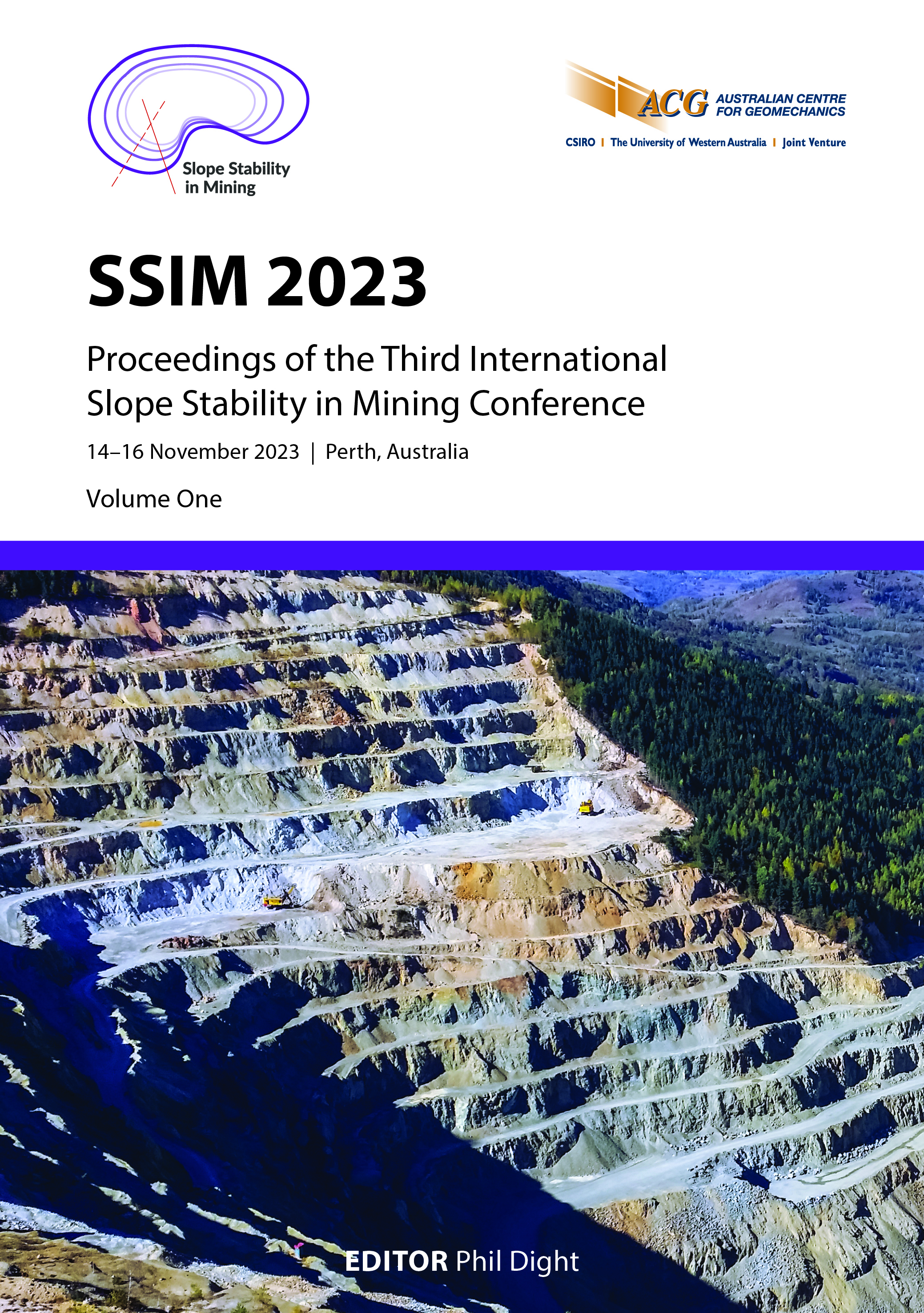Exceptional travel distance for a Pilbara failure

|
Authors: Ross, DG |
DOI https://doi.org/10.36487/ACG_repo/2335_35
Cite As:
Ross, DG 2023, 'Exceptional travel distance for a Pilbara failure', in PM Dight (ed.), SSIM 2023: Third International Slope Stability in Mining Conference, Australian Centre for Geomechanics, Perth, pp. 535-550, https://doi.org/10.36487/ACG_repo/2335_35
Abstract:
A 140,000 m3 slope failure occurred in a BHP Western Australia Iron Ore mine in the Pilbara region. This occurred in Cenozoic sediments and the Archean West Angelas Member of the Marra Mamba Iron Formation. The 80 m high failure occurred on a slope of 50° measured from pit crest to slope toe and resulted in a deposit runout of 133 m. This exceeded the 95th percentile Whittall (2015) Fahrböschung model travel distance prediction of 124 m. Individual particles travelled to 152 m. This runout behaviour was significantly beyond the author’s 12-year experience in the Pilbara iron ore environment. As the scale of iron ore mining in similar geological settings in the Pilbara is considerable, the intention is to share this runout behaviour for the benefit of the surface geomechanics community and particularly those operating in this environment. This case history outlines elements of the failure geometry, geology and hydrogeology. It then reconciles the runout against the Whittall (2015) Fahrböschung Volume model and the Optimised Mobility Index model. Whether the runout models are suitable for this environment and whether Pilbara Cenozoic and West Angelas materials are more mobile than the Whittall (2015) Fahrböschung dataset are discussed. Other observations are included, such as how runout estimates based on the moving surface area might change rapidly where failures expand rapidly. Lastly, the lack of groundwater data from within the slope and potential limitations, even if it had been present, is also discussed.
Keywords: runout, Fahrböschung, Pilbara
References:
Baxter, H 2016, ‘Geophysics, geochemistry and engineering geology: how disciplines combine to improve mine slope design in the Pilbara detrital valleys of Western Australia’, in MJ Eggers, JS Griffiths, S Parry & MG Culshaw (eds), Developments in Engineering Geology, Engineering Geology Special Publication 27, Geological Society, London, pp. 81–92
Day, AP & Seery, JM 2007, ‘Monitoring of a large wall failure at Tom Price iron ore mine’, in Y Potvin (ed.), Slope Stability 2007: Proceedings of the 2007 International Symposium on Rock Slope Stability in Open Pit Mining and Civil Engineering, Australian Centre for Geomechanics, Perth, pp. 333–340,
Lorig, L, Dowling, J, Beale, G & Royle, M 2013, ‘Numerical model’, in G Beale & J Read (eds), Evaluating Water in Pit Slope Stability, CSIRO Publishing, Melbourne, pp. 216–277.
McQuillan, A, Canbulat, I, Payne, D, Oh, J 2018, ‘New risk assessment methodology for coal mine excavated slopes’, International Journal of Mining Science and Technology, vol. 28, no. 201, pp. 583–592.
Venter, J, Kuzmanovic, A & Wessels, SDN 2013, ‘An evaluation of the CUSUM and inverse velocity methods of failure prediction based on two open pit instabilities in the Pilbara’, in PM Dight (ed.), Slope Stability 2013: Proceedings of the 2013 International Symposium on Slope Stability in Open Pit Mining and Civil Engineering, Australian Centre for Geomechanics, Perth, pp. 1061–1076,
Whittall, JR 2015, Runout Exceedance Prediction for Open Pit Slope Failures, MSc thesis, The University of British Columbia, Vancouver.
Whittall, J, Mitchell, A & McDougall, S 2020, ‘Runout of open pit slope failures: an update’, in PM Dight (ed.), Slope Stability 2020: Proceedings of the 2020 International Symposium on Slope Stability in Open Pit Mining and Civil Engineering, Australian Centre for Geomechanics, Perth, pp. 1149–1162,
© Copyright 2025, Australian Centre for Geomechanics (ACG), The University of Western Australia. All rights reserved.
View copyright/legal information
Please direct any queries or error reports to repository-acg@uwa.edu.au
View copyright/legal information
Please direct any queries or error reports to repository-acg@uwa.edu.au

